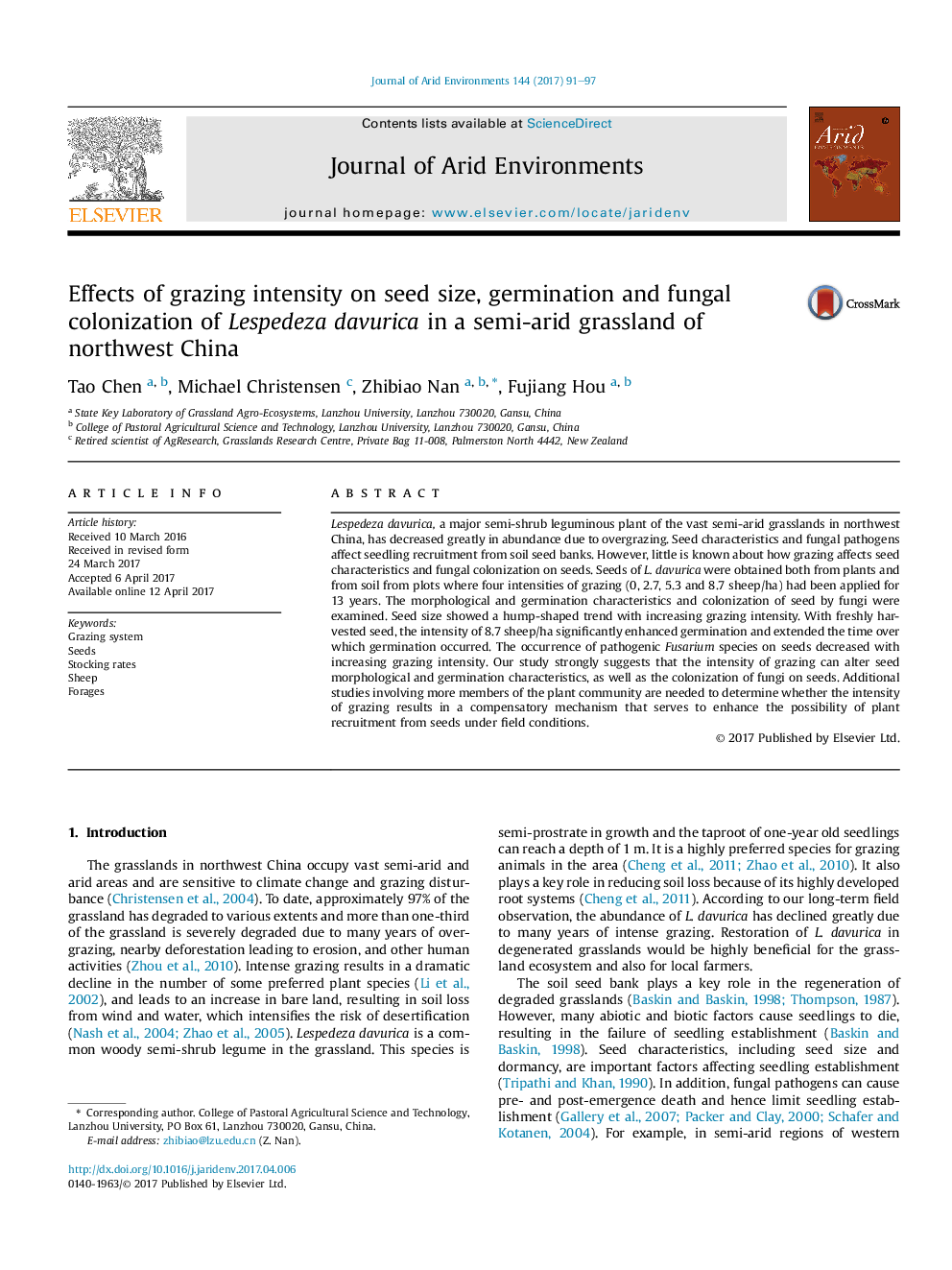| Article ID | Journal | Published Year | Pages | File Type |
|---|---|---|---|---|
| 5744368 | Journal of Arid Environments | 2017 | 7 Pages |
â¢Seed size showed a hump-shaped trend with increasing grazing intensity.â¢The size of seed was decreased greatly by the intensity of 8.7 sheep/ha.â¢Germination characteristics of seed from plants were enhanced by the intensity of 8.7 sheep/ha.â¢The occurrence of pathogenic Fusarium species on seeds decreased with grazing intensity.
Lespedeza davurica, a major semi-shrub leguminous plant of the vast semi-arid grasslands in northwest China, has decreased greatly in abundance due to overgrazing. Seed characteristics and fungal pathogens affect seedling recruitment from soil seed banks. However, little is known about how grazing affects seed characteristics and fungal colonization on seeds. Seeds of L. davurica were obtained both from plants and from soil from plots where four intensities of grazing (0, 2.7, 5.3 and 8.7 sheep/ha) had been applied for 13 years. The morphological and germination characteristics and colonization of seed by fungi were examined. Seed size showed a hump-shaped trend with increasing grazing intensity. With freshly harvested seed, the intensity of 8.7 sheep/ha significantly enhanced germination and extended the time over which germination occurred. The occurrence of pathogenic Fusarium species on seeds decreased with increasing grazing intensity. Our study strongly suggests that the intensity of grazing can alter seed morphological and germination characteristics, as well as the colonization of fungi on seeds. Additional studies involving more members of the plant community are needed to determine whether the intensity of grazing results in a compensatory mechanism that serves to enhance the possibility of plant recruitment from seeds under field conditions.
